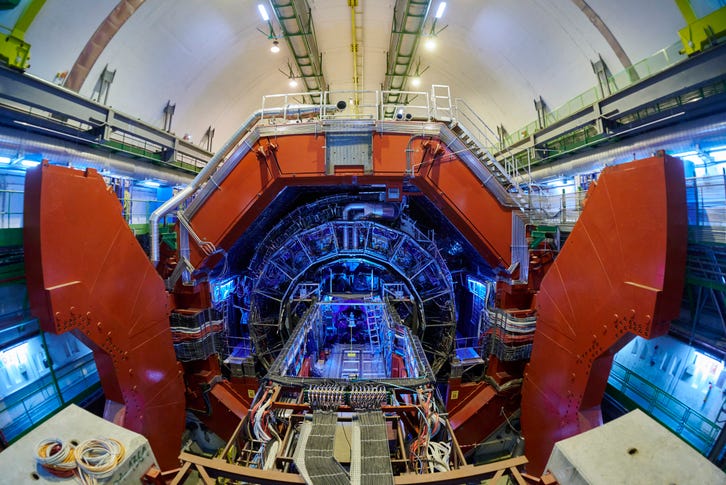Summary:
Gold has been created at CERN’s LHC—not through chemistry, but via high-energy nuclear transmutation. The ALICE experiment measured the conversion of lead into gold during near-miss lead-lead collisions. While the quantities are microscopic, the mechanism reveals insights into both nuclear interactions and the operational limits of particle accelerators.
A Medieval Dream Realized—Technically
The ALICE collaboration has achieved what medieval alchemists could not: the transformation of lead into gold. In a paper published in Physical Review Journals on 8 May 2025, CERN researchers presented detailed measurements of gold production during high-energy lead–lead collisions at the Large Hadron Collider (LHC).
This is not chemistry; it’s nuclear physics. By exploiting the intense electromagnetic fields that emerge during near-miss collisions—where two lead nuclei pass each other at relativistic speeds without directly interacting—photons are emitted in tightly compressed pulses. These photons initiate electromagnetic dissociation, a process capable of knocking protons out of atomic nuclei. When three protons are stripped from a lead nucleus (Z=82), the result is a gold nucleus (Z=79).
The Process: Electromagnetic Dissociation
When lead nuclei traveling at 99.999993% of the speed of light pass close by one another, the electromagnetic field generated behaves like a compressed photon pulse. The field excites the internal structure of a nearby nucleus, leading to the ejection of neutrons and protons. In some cases, three protons are expelled—transmuting lead to gold.
The ALICE detector’s Zero Degree Calorimeters (ZDCs) were used to capture and quantify these rare events. The team tracked how many interactions led to the loss of 0, 1, 2, or 3 protons, corresponding respectively to the production of lead, thallium, mercury, and gold. The occurrence of gold was less frequent, but measurable.
Quantifying Gold at the Collider
Based on data collected during Run 2 of the LHC (2015–2018), approximately 86 billion gold nuclei were generated. The total mass amounted to 29 picograms (2.9 × 10⁻¹¹ g). ALICE reports that Run 3 has nearly doubled this output due to higher luminosity. Still, the aggregate amount remains functionally negligible—millions of times below the threshold required for physical collection or application.
The generated gold nuclei do not persist. After creation, they continue along the beamline with high kinetic energy and collide with beam pipe walls or collimators. These collisions result in the immediate disintegration of the gold into subatomic particles.
Scientific Significance and Operational Insight
ALICE’s measurements provide empirical grounding for theoretical models of electromagnetic dissociation. These models are not only relevant for high-energy nuclear physics, but also for managing beam losses—a critical performance constraint in the LHC and any future collider designs.

According to ALICE spokesperson Marco Van Leeuwen, the detector’s sensitivity enables the simultaneous study of high-multiplicity head-on collisions and rare, low-yield electromagnetic interactions. Uliana Dmitrieva and John Jowett of the ALICE team emphasized that this is the first systematic experimental detection of gold transmutation at the LHC, and that the results enhance both theoretical accuracy and operational forecasting.
Closing Note
The production of gold at the LHC is real but fleeting. No bullion will be cast, but the implications for particle physics are tangible. ALICE has opened a new window into the role of electromagnetic interactions in nuclear transformations—bridging millennia between alchemical ambition and measurable outcome.





